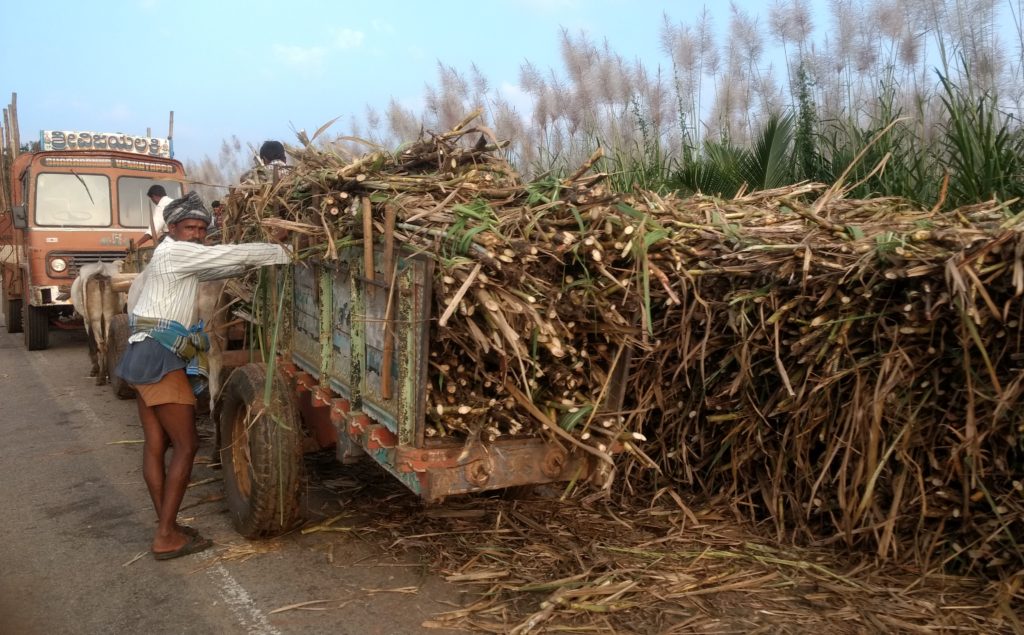How GST Can Reinvent Hope for the Crops and Change the Plight of the Indian Farmer
Turkish filmmaker Semih Kaplanoglu’s 2017 movie, “Grain” is a contemplative, apocalyptic, science-fiction (sci-fi) drama, which predicts a corporate controlled future, with drought, starvation, wandering refugees, genetically modified (GM) crops, and a hazardous genetic crisis in the backdrop. Even though the filmmaker emphasizes on the inner journey of the protagonist, a seed geneticist, and his transformation, the movie leads us to a terrifying future of apocalyptic agrarian crisis.
Back in the reality of the present, India entered into a paradigm shift in the tax regime by implementing the Goods and Services Tax (GST), which was launched at midnight on 1 July 2017.
A lot has been said, written and debated over the customized “0%, 5%, 12%, 18%, and 28%” slabs of the GST system after its implementation. And, most of the pros and cons of the new system have been going through the stark realities of India’s complex, diverse and delicate agrarian framework. Around 160 countries in the world have already implemented GST or Value-added tax (VAT), including the European countries, which introduced GST back in the ’70s and ’80s, along with accompanying protests, inflation and compliance issues.

Interestingly, the United States (US) stands out as the only major economic power that doesn’t have a GST. When Asia’s third-largest economy, with more than half the country’s population depends on agriculture for a living, set out to shake off its old tax system, there was an air of pessimism flavoured with confusion in all sectors. Agriculture, a major sector that contributes 17 percent to the GDP, which had ironically remained relatively stagnant while all other sectors enjoyed considerable growth rates in decades after the ’90s, was more daunted for its lack of advanced technology, incompetent markets and small landholding structure prevailing in the country.
The socio-political realities like a quarter the Indian farmers live below the poverty line, with 52% of farming households are indebted added more apprehension. Even though the government has fixed guaranteed prices for crops like wheat, rice and cotton, farmers’ call for 50 percent profits over the cost of production and a waiver of their agricultural loans are still to be answered. Factors such as intensified farming methods, chemical fertilizers, pesticide, high yielding seeds, lack of irrigation, drought, and consequent spike in the cost contributed to the tragic plight of post-green revolution farmer in the globalized Indian market.
Under such “not so optimistic” circumstances, the GST established a unified National Agricultural Market, which can empower the vulnerable farmers if supported with transparent, reliable and timely supply chain mechanism. It also kept the agriculture sector outside of the GST compliances. An agriculturist would come under non-taxable person category and service tax would also be exempted in various services. The GST framework differentiated seeds (exempt), fertilizers (12%) and tractors (12%) from the crop protection products which remain taxable at 18%.
This crucial split between crop protection and agricultural produce opened up new challenges towards the foodgrain requirements and agricultural productivity of the nation. To make it clear, there will be an increase of production cost of any farm output. As the cost rises and output price, which are still controlled by market forces, remains relatively stagnant and lack of proper government support along with poorly administered crop insurance schemes add the burden on farmers.
Moreover, a model contract farming act is still under construction and states allow contract farming only for selected crops. The private corporate investments in farming sector become the most favourite solution of the experts for improving farmers’ earnings. Possibilities of Indian farming sector be restructured as a hub for the international food market chains are also in the pipeline. While demonetisation of high-value banknotes in November 2016 and GST implementation in July 2017 caused a serious economic slowdown, the slowest in the four years since the Modi government came into power, the hopes of Indian farmers are shrouded in the cloak of uncertainty.

India’s farmers have been suffering over last few decades due to various economic policies and reforms introduced by previously ruled parties; a bitter fact evident from the record number of farmer suicides and the ever-widening gap between socio-economic classes of the population. Unless the farmers in India and the hundreds of thousands of people who are directly or indirectly connected to agriculture won’t be able to earn the best available price for their produce through the support of farsighted economic and agrarian policies of the government, they will have to look into the eyes of a pessimistic ghost who sing songs of the lost lives of hundreds of farmers.
Semih Kaplanoglu ends his movie Grain in a surrealistic imagery of ants preserving natural seeds from the tentacles of the corporation which dictates farming with genetically modified crops developed in its labs. But, when it comes to hope, GST framework is yet to prove its compatibility and commitment towards Indian farmer, and the government should play the role of an optimistic filmmaker who trusted ants over an all-embracing multinational corporate entity.
Also Read: How Kudumbashree Redeemed the Fallen Agrarian Angels as Agripreneurs


